Lung cancer | Innovation and comprehensive care in the fight against lung cancer
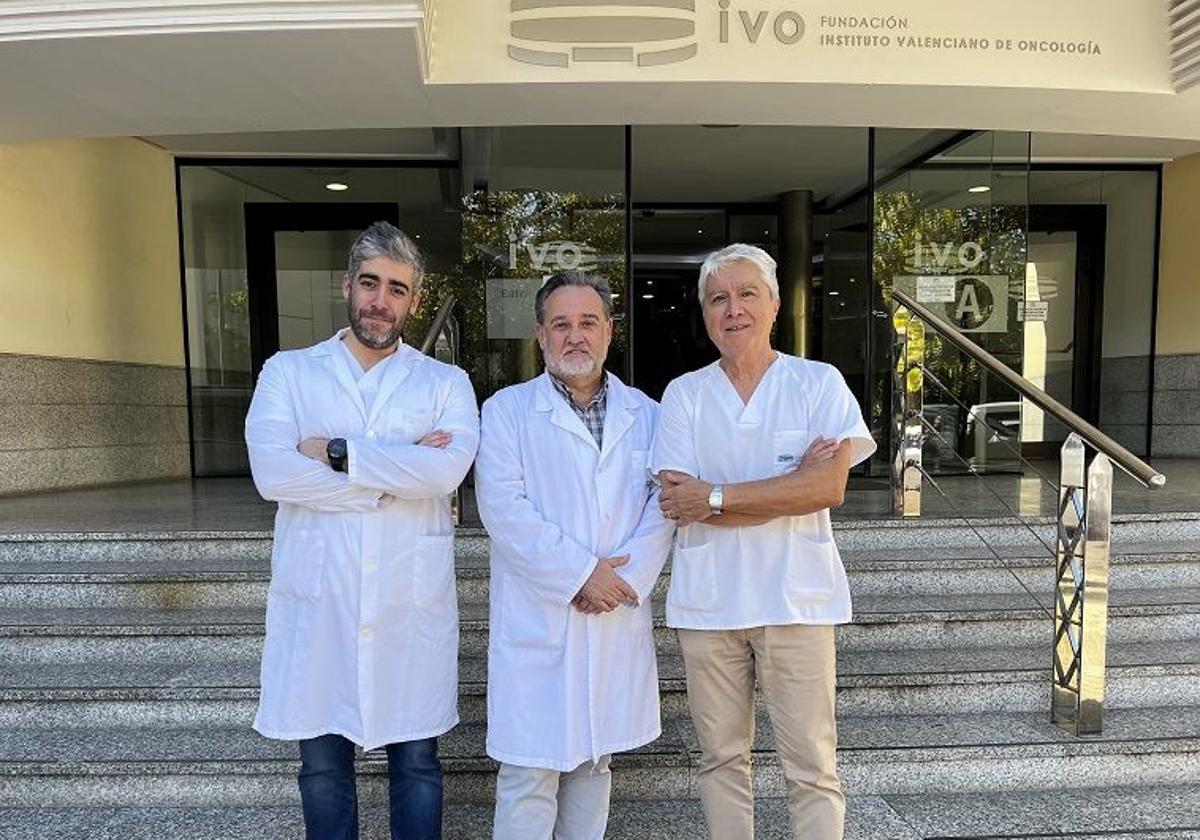

Sunday, November 17, 2024 01:31
Every year on November 17, World Lung Cancer Day aims to raise awareness about one of the deadliest cancers with the highest incidence worldwide. It is estimated that by the end of 2024, more than 32,700 people will be diagnosed with the disease in Spain, and more than one million people will be diagnosed with lung cancer worldwide. According to the Spanish Society of Medical Oncology (SEOM), “Lung cancer is the first cause of cancer death in men and the second in women.“. Overall, it is the leading cause of cancer death, accounting for 20.3% of all cancer deaths.
The vast majority of these cases are related to tobacco use. Modern research shows that between 80 and 90% of cases are associated with smoking, both active and passive.. “The risk of developing lung cancer is 10 to 20 times higher in smokers and former smokers,” says Dr. Sergio Sandiego, assistant professor of medical oncology service at the Valencian Institute of Oncology (IVO). Additionally, recent research suggests that women may be more susceptible to tobacco carcinogens due to genetic, hormonal factors, or differences in DNA repair, although these factors are still being studied.
Dr. Leoncio Arribas
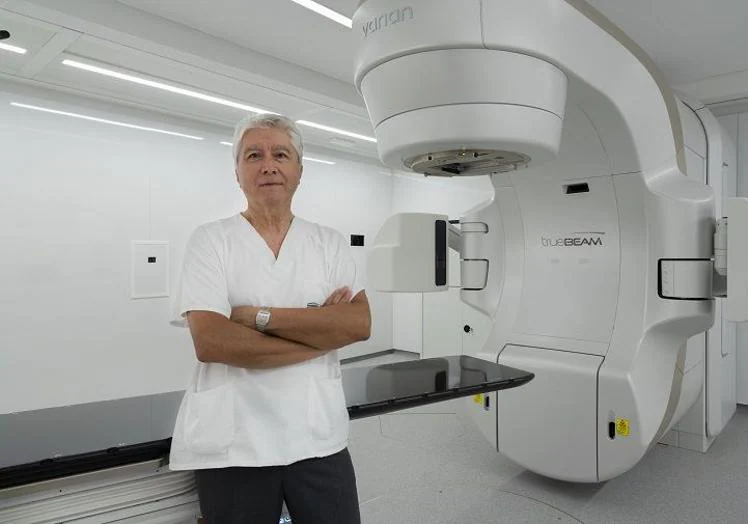
Therapeutic options
In the medical field, lung cancer It is divided into two main types: small cell cancer and non-small cell cancer.with the latter being the most common. Among non-small cell carcinomas, adenocarcinoma is the most common, followed by squamous cell carcinoma and large cell carcinoma. Dr. Sandiego emphasizes that “in the initial stages, treatment methods are similar: surgery or radiation therapy, with or without chemotherapy; However, in later stages, treatment methods vary significantly.
In the case of adenocarcinoma, studying the genetic profile of the tumor allows the use of targeted therapy that specifically affects the identified genetic mutations. This treatment is more effective and less toxic. allowing survival for several years in some cases. “Immunotherapy alone or in combination with chemotherapy doubled survival in many patients and allowed a percentage of them to reach the five-year mark, which is important in the context of this disease,” adds Dr. Sandiego.
Targeted treatments have changed the outlook for many patients, especially those with adenocarcinoma, by identifying and targeting specific mutations in genes such as EGFR, ALK or ROS. These achievements have allowed Immunotherapy has become standard treatment. for advanced patients with previously unimaginable survival rates.
Dr. Sandiego, Dr. Peñalver and Dr. Arribas
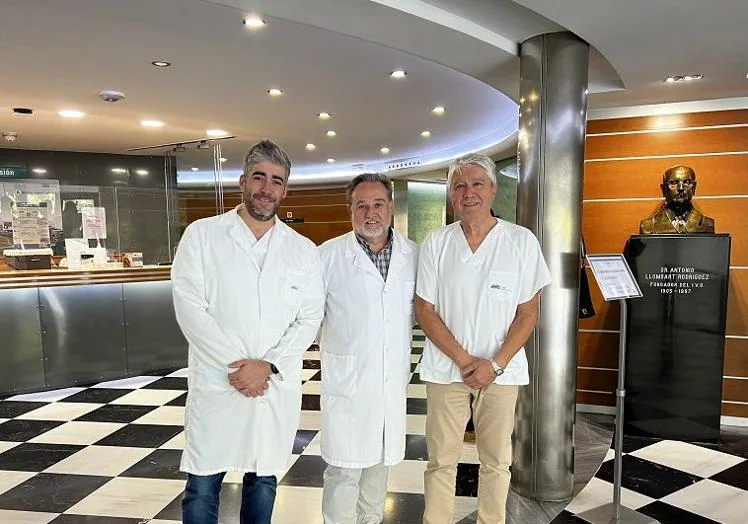
Advances and future of treatment
In the area of innovative treatments, Dr. Sandiego mentions promising developments: “Bispecific antibodies, adoptive cell therapies, conjugate antibodies, or RNA vaccines are being explored to further improve current results.” These treatments, combined with a combination of chemotherapy and radiotherapy in the preoperative stages, show encouraging preliminary results in terms of survival and reduction in relapse.
Another key achievement is liquid biopsy to detect tumor DNA circulating in the bloodproviding important information about tumor mutations that helps personalize treatment and monitor early relapses. In addition, the development of new treatments for genetic changes associated with lung cancer (such as KRAS, MET, RET, NTRK or HER2) opens new doors to more precise and effective medicine.
Dr. Juan Carlos Peñalver
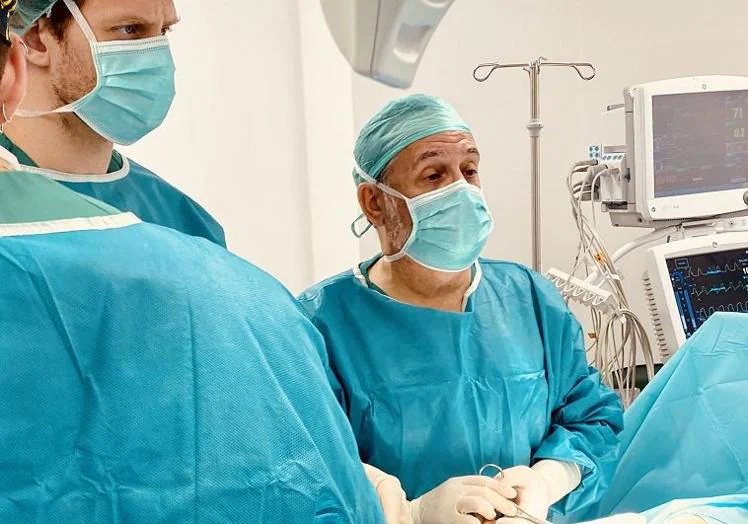
Thoracic surgery
Dr. Juan Carlos Peñalver, head of the IVO Thoracic Surgery Service, emphasizes that “pulmonary resection surgery continues to be the best therapeutic option for patients with localized lung cancer.” However, this intervention is limited to the early phases of the disease. Lobectomy is still considered the optimal resection, although with the advent of early detection programs and the discovery of smaller tumors, a group of more limited resections has emerged, with anatomic segmentectomy being one of the least invasive procedures that allows better preservation of lung tissue. without compromising the results.
Except, The introduction of robotic surgery meant a revolution in minimally invasive treatment of lung cancer. It was introduced at IVO in 2020 and since then more than 60 interventions have been carried out using this technology. Dr. Peñalver explains that this technique “allows the surgeon to perform complex resections with greater precision and access to reduced areas through small incisions. This has significantly improved the patient’s recovery and quality of life.”
A rapid recovery protocol, or “fast track,” complements these surgical advances. This multidisciplinary program ranges from preoperative preparation to early postoperative mobilization, allowing The patient can return home three to four days after surgery.which improves the hospital stay and allows you to return to daily activities.
Dr. Sergio Sandiego
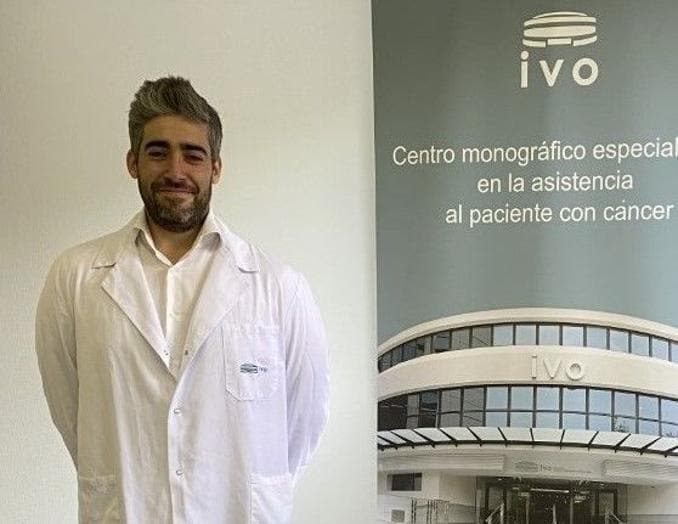
New methods
There have been remarkable improvements in radiation therapy, and IVO is leading the way in some of these advances. “The image quality obtained with the new CT and MRI systems allows Precisely irradiate the tumor volume while sparing healthy tissue“Says Dr. Leoncio Arribas, Head of Radiation Oncology at IVO. This was critical to increasing cure rates without increasing side effects.
Fractionated stereotactic radiotherapy (SRT) has proven itself in the treatment of small primary tumors and metastases. the control rate reaches 95% in most treated cases. SBRT in combination with immunotherapy has demonstrated synergistic effects and increased treatment efficacy in cases of metastatic tumors of the lung, prostate and kidney.
Multidisciplinary approach
A fundamental aspect of lung cancer treatment is a multidisciplinary approach that brings together specialists in the fields of pulmonology, thoracic surgery, medical oncology, radiation oncology, oncopsychology, physical therapy and others. “Collaboration on the Thoracic Pathology Committee allows us to make collegial clinical decisions, which results in significant improvements in patient survival,” explains Dr. Peñalver.
This integrated approach allows us to develop more precise treatment and improved quality of life for the patientsomething of priority in IVO investigations. According to Dr. Sandiego, “Current treatments have less impact on the patient’s quality of life; “Many clinical trials already include questionnaires to assess this aspect, and we have seen a noticeable reduction in side effects such as alopecia, nausea or severe fatigue.”
Focus on innovation
IVO continues to focus on innovation, with a particular focus on clinical trials for drug development and targeted therapies. “Lung cancer has become one of the areas with the greatest pharmacological development.“Concludes Dr. Sandiego, who emphasizes that over the last decade, immunotherapy, cell therapy and conjugated antibodies have changed the picture.
Advances in diagnosis, treatment and quality of life provide a ray of hope for patients with lung cancer. As IVO and other centers continue their research, the goal remains clear: to improve survival and provide patients with the highest possible quality of life.
